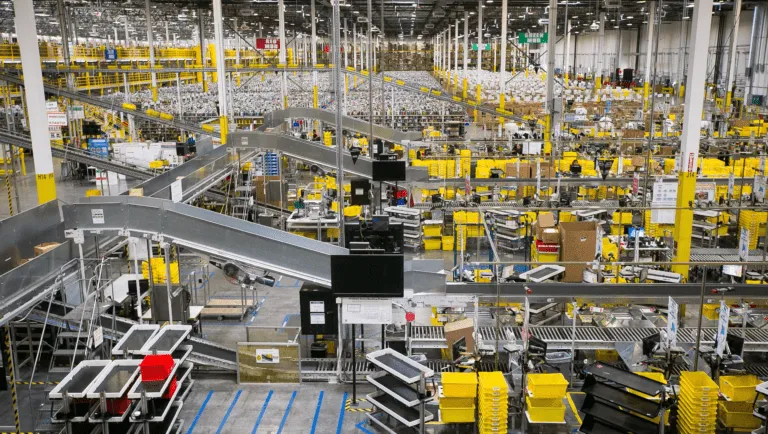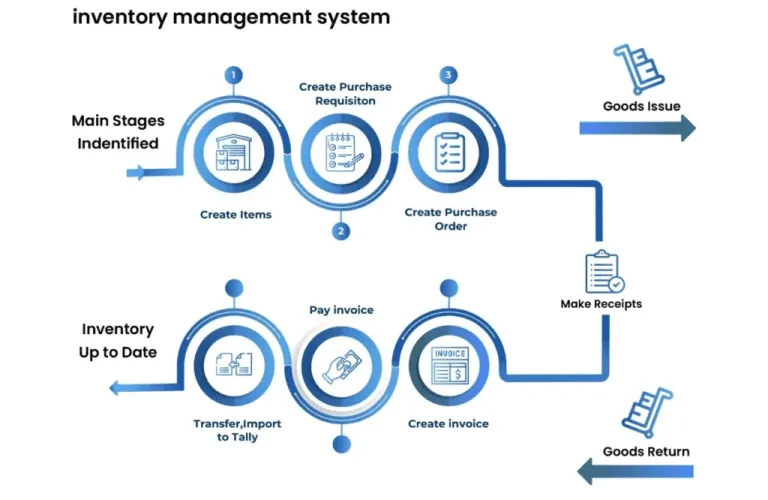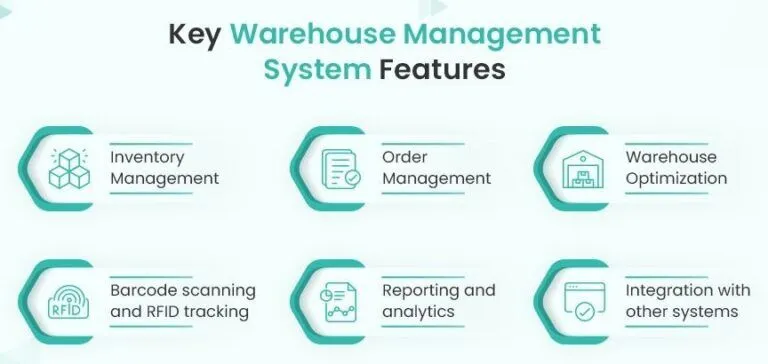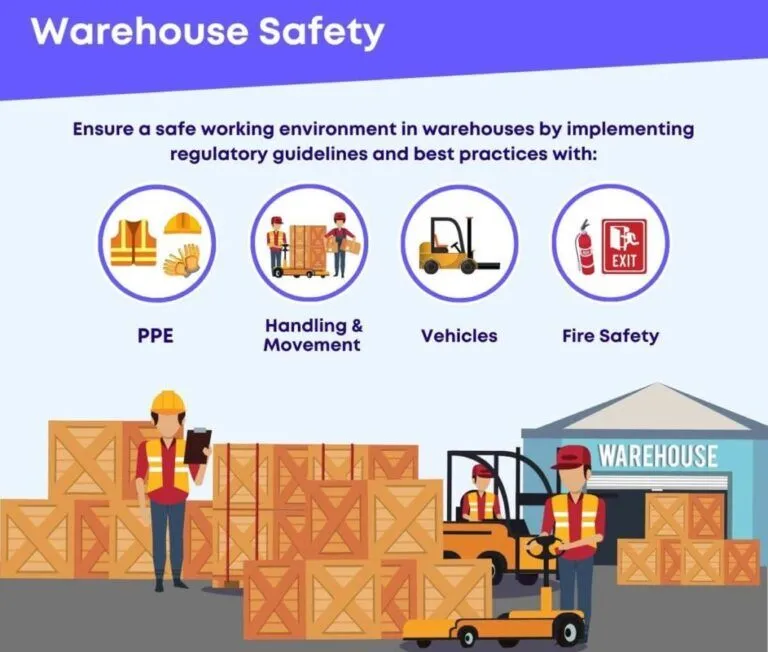14+ Warehouse Management Best Practices + Expert Checklist
So how much inventory is too much, and how much is not enough? An age-old question that left even the best among us scratching our heads.
Ready to transform your supply chain?

It’s just a fraction of warehouse intricacies that warehouse management deals with. From optimizing storage space to efficient order fulfillment, there’s a lot more to it. But unless you follow warehouse management best practices, you are going nowhere.
The success of your warehouse directly impacts the overall supply chain and efficient warehouse management is a crucial link between manufacturers and consumers in this whole equation. Happy customers mean happy manufacturers and that’s a win for everyone involved.
If you are looking to improve your warehouse management operations to meet the ever-evolving market demands and customer satisfaction, our article is for you. But before you get into the details, here is a glimpse of what we’ll be covering today.
- 14 warehouse management best practices to put you on the right track.
- Carefully created checklist to simplify the process for you.
14 Warehouse Management Best Practices For Maximizing Efficiency
Here are the 14 proven strategies that will transform your warehouse management process from chaotic to perfect.
01. Use An Inventory Management System

An inventory management system is a powerful software that tracks all the products and items in your warehouse. Categorize items based on their type, size, demand, or any other relevant criteria. With proper inventory management processes in place, you can easily locate products when needed and reduce the time spent searching for items and increase overall efficiency.
With an inventory management system, you can set up reorder points for each item. Reorder points trigger automatic restocking when inventory levels reach a predefined threshold. Additionally, maintaining safety stock – an extra buffer of inventory – ensures you can handle unexpected surges in demand or delays in the supply chain.
Regularly conduct physical inventory audits to reconcile the data in your management system with the actual stock on hand. This helps identify discrepancies and resolve issues like theft, damage, or system errors.
02. Use Warehouse Management System

Warehouse management systems (WMS) are software applications designed to optimize warehouse operations and improve overall efficiency. It helps you determine the most suitable storage locations for different products based on their size, weight, and demand frequency.
Invest in the best warehouse management system that will let you automate various aspects of order fulfillment, like order picking, packing, and shipping. This reduces errors and speeds up order processing times.
You can monitor warehouse inventory levels, order statuses, and overall warehouse performance in real time. Having access to this information lets warehouse managers make informed decisions promptly, address any issues as they arise, and keep customers informed about their orders.
03. Optimize Warehouse Space & Layout
Analyze the flow of goods in your warehouse. Identify the high-demand and frequently accessed items and position them closer to the shipping area for quicker and more efficient order picking. Arrange your inventory strategically so the most commonly picked items require minimal travel time and effort.
Divide your warehouse into dedicated zones based on the type, size, or category of products. Assign specific areas for receiving, storage, packing, and shipping. This segregation helps in streamlining operations and ensures that employees complete their respective tasks without disruptions.
Ensure that the layout gives enough space for employees to move around safely, especially in areas with heavy equipment like forklifts. Implement clear safety guidelines and provide adequate training to warehouse staff.
04. Implement Efficient Receiving & Shipping Processes
When receiving shipments from suppliers, prioritize unloading and inspection processes. Have a designated area for unloading goods and make sure that the inventory is thoroughly checked for accuracy and any damages.
Instead of manual data entry, use technology like barcode scanners or radio-frequency identification (RFID) tags to record and manage inventory as it is received. These tools streamline data collection, reduce human errors, and provide real-time updates to your inventory management system.
Implement efficient pick-pack-ship strategies to expedite order fulfillment. Use the insights from your warehouse management system to group orders with similar products. Invest in quality packing materials and train your staff on effective packing techniques so that the products reach customers in pristine condition.
Integrate your shipping processes with reliable carriers to minimize shipping times and improve the overall delivery experience.
05. Embrace Automated Technologies
Start by identifying areas in your warehouse operations where automation can make a significant impact. Consider automating repetitive tasks like order picking, packing, and labeling using robotic systems. Look into automated conveyor systems for streamlined material handling and transportation within the warehouse.
Consider using robotic arms or autonomous mobile robots (AMRs) for moving items within the warehouse. Ensure that the automated technologies you adopt integrate with your warehouse management system. This integration allows for smooth data exchange, real-time inventory tracking, order statuses, and overall warehouse performance.
As you introduce automated technologies, make sure your employees understand how to operate, maintain, and troubleshoot the new equipment. Assure them that automation is meant to complement their work, not replace them.
06. Prioritize Safety & Security Measures

Implement a comprehensive safety training program for all warehouse employees. Ensure that they are aware of safety protocols, know how to handle equipment safely, and understand the potential hazards associated with their tasks. Regularly conduct safety drills to reinforce best practices and keep safety at the forefront of everyone’s minds.
Give your employees appropriate safety equipment, including personal protective gear like gloves, helmets, and safety vests. Make sure that equipment like forklifts and conveyors are well-maintained and meet safety standards. Encourage employees to report any equipment issues promptly to prevent accidents.
Avoid cluttering walkways or storage areas and make sure that emergency exits are easily accessible. Control access to your warehouse to prevent unauthorized entry. Use technologies like key card systems, biometric scanners, or surveillance cameras to monitor and restrict access as needed.
Prioritize the protection of your digital systems and data. Implement cybersecurity measures to protect sensitive information, including customer data and inventory records. Regularly update software and use strong passwords to prevent unauthorized access to your digital assets.
07. Implement Effective Demand Planning Strategies
Start by analyzing historical sales data to identify trends, seasonal fluctuations, and any other patterns that may impact demand. Involve your sales and marketing teams in the demand planning process. Their input will provide valuable information about upcoming promotions, product launches, or any other marketing initiatives that can influence customer demand.
Use forecasting tools and software to perform demand forecasting more accurately. These tools use advanced algorithms and data analytics to project future demand based on historical data and external factors. Incorporate market trends, economic conditions, and industry forecasts to improve prediction accuracy.
Maintain safety stock of important items to mitigate the risks of stockouts during unexpected high demand or supply chain disruptions.
08. Streamline Order Picking & Packing Processes
For a streamlined picking process, arrange products in a logical sequence that reduces travel time and minimizes the distance between frequently picked items and the shipping area. Implement technology-driven order-picking solutions like pick-to-light or pick-to-voice systems that guide warehouse staff to the correct items and quantities to fulfill an order accurately.
Identify orders with overlapping items and group them for batch picking. This reduces the overall time spent on picking tasks and increases order throughput. Explore automated packing solutions that can package items quickly and accurately. Automated packing machines can handle different package sizes and materials.
Establish a quality control process to double-check picked and packed orders before they leave the warehouse. Conduct regular audits to ensure that all products are correctly labeled and meet quality standards. Minimizing errors in the packing process prevents costly returns and improves customer satisfaction.
09. Returns & Reverse Logistics Management
Create a clear and customer-friendly returns policy in place. Communicate this policy to your customers – both on your website and in shipment packages. Make the returns process straightforward and easy to follow, including providing a pre-paid return shipping label when possible.
Once items are returned, promptly inspect them for any damages or quality issues. Classify returned items into categories like resaleable, refurbishable, or damaged. Use technology to automate returns processing as much as possible. This includes updating inventory levels, issuing refunds or store credits, and updating customer records in your system.
Keep a close check on returns trends and reasons for returns. Analyze this data to identify any recurring issues and take corrective actions to minimize returns in the future. Understanding the root causes of returns can help improve product quality, packaging, or customer service.
Implement efficient reverse logistics processes to route returned items to their appropriate destinations, whether it’s restocking, refurbishment, or disposal. Aim to minimize handling, transportation, and warehouse storage costs during reverse logistics.
As part of reverse logistics, focus on sustainable practices for product disposal and recycling. Whenever possible, recycle, repurpose, or donate returned items to reduce waste and contribute positively to your company’s environmental efforts.
10. Implement A Yard Management System (YMS)
Analyze your yard layout and organize it logically. Designate specific areas for different types of assets like inbound trailers, outbound trailers, empty containers, and staging areas.
Invest in a YMS that provides real-time visibility into the status and location of assets in your yard. The system should track the arrival and departure times of trailers, monitor the progress of loading and unloading, and offer alerts for potential delays.
Here, choosing the correct YMS is important if you want to make your logistics work better. Fortunately, Vector is just the solution you need.
With Vector, you can easily rearrange dock door assignments, reallocate resources on the go, and handle unexpected changes with ease. Our platform keeps you agile and maintains efficiency throughout the entire process.
Our digital check-in feature lets drivers complete the process quickly and easily from their mobile devices. They can enter and leave your facility up to 3 times faster than before. Our dynamic appointment scheduling feature simplifies and optimizes the scheduling process for carriers. They can schedule or reschedule appointments anytime.
Dock door management becomes a breeze with Vector’s YMS. You get a centralized platform to efficiently manage and coordinate dock door assignments. Maximizing dock door utilization allows for a smooth flow of inbound and outbound shipments, speeding up loading and unloading processes, and ultimately reducing lead times to boost productivity.
Vector’s YMS lets you convert your paper-based BOLs into a digital format and securely upload them to cloud servers. Our app enhances the image quality for better legibility, and with Vector’s eBOL, drivers can complete the entire process up to 30% faster.
We’ve made sure that Vector’s YMS smoothly integrates with your existing systems like your TMS or WMS. We provide complete tracking and monitoring features, helping you identify obstacles, streamline processes, and optimize workflows.
Our platform provides advanced analytics capabilities. You can analyze data on arrival and departure times, dwell times, and asset utilization. Having this data lets you pinpoint areas that need improvement, effectively manage your resources, and make better decisions.
11. Employ Continuous Training & Development Programs
Identify the training needs of your warehouse staff. Conduct performance assessments, gather feedback from employees, and analyze areas that require improvement. Make sure that new hires receive a comprehensive onboarding process that introduces them to the company’s culture, safety protocols, and job-specific training.
Safety should be a top priority in your warehouse. Conduct regular safety training sessions to reinforce best practices and ensure that all employees are aware of warehouse safety protocols and procedures. Provide job-specific training to employees to enhance their skills in various warehouse tasks.
As your warehouse adopts new technologies or updates existing systems, make sure that employees receive adequate training on these tools. Don’t overlook the importance of soft skills in your warehouse workforce. Provide training in communication, teamwork, problem-solving, and customer service.
Recognize and reward employees who actively participate in training and development programs. Acknowledging their efforts reinforces a culture of learning and encourages continuous improvement.
12. Implement Quality Control Measures

Develop and document standard operating procedures (SOPs) for different warehouse processes. SOPs serve as guidelines for employees to follow consistently, reducing the chances of errors and ensuring uniformity in operations.
Conduct regular inspections and sampling of products to verify their quality and compliance with established standards. Train your warehouse staff on quality control procedures and ensure they are aware of the importance of maintaining high-quality standards.
Continuously monitor your warehouse processes and quality control measures. Encourage a culture of continuous improvement where employees actively look for ways to enhance quality control practices.
Work closely with your suppliers to establish quality requirements and ensure they meet those standards consistently. Regularly assess supplier performance to identify any recurring quality issues and collaborate with them to resolve these problems.
13. Foster Effective Communication & Collaboration
Conduct regular team meetings to keep everyone informed about ongoing projects, updates, and challenges. Encourage collaboration between different departments within your organization, like sales, inventory, and shipping, for better coordination and alignment of goals.
Implement communication tools, like instant messaging platforms or project management software, for real-time communication among employees. Clearly define reporting lines and establish a chain of command. This ensures that employees know whom to approach for specific matters and prevents confusion during critical situations.
14. Regularly Monitor & Analyze Key Performance Indicators (KPIs)
Start by identifying the KPIs that align with your warehouse’s goals and objectives. Some common KPIs for warehouses include:
- Order accuracy
- On-time delivery
- Inventory turnover
- Order fulfillment time
- Warehouse utilization
- Pick, pack, & ship accuracy
Once you identify the relevant KPIs, set benchmarks and targets based on historical performance or industry standards. Use technology to collect and aggregate data related to the identified KPIs. Regularly review these reports to track performance against benchmarks and targets.
Continuously analyze performance trends and patterns revealed by the KPI data. Look for areas where performance is below target and identify potential root causes. Use KPIs as a basis for implementing continuous improvement initiatives in your warehouse. When you identify areas of underperformance, collaborate with your team to develop and execute action plans to address the issues.
Review your selected KPIs periodically to ensure they stay relevant to your warehouse’s goals. Adjust or add new KPIs as needed to reflect changes in your business strategies or industry demands.
Create a positive and supportive work culture that values open communication, feedback, and constructive criticism. Empower your employees to voice their ideas and suggestions for process improvements. Encourage them to take ownership of their tasks. Implement effective conflict resolution strategies to address any issues that may arise between team members.
Expert Checklist For Warehouse Management: Ensuring Seamless Operations In Your Warehouse
To make sure you have the right information, we’ve crafted a no-nonsense, easy-to-refer checklist. Trust us, you’ll want to keep this checklist within arm’s reach at all times.
01. Inventory Management Checklist
- Organize & track inventory
- Set reorder points & safety stock
- Conduct regular audits
02. Warehouse Layout & Organization Checklist
- Analyze the flow of goods
- Create dedicated zones
- Implement safety measures
03. Receiving & Shipping Processes Checklist
- Prioritize unloading and inspection
- Utilize technology for inventory entry
- Adopt pick-pack-ship strategies
04. Automated Technologies Checklist
- Identify automation opportunities
- Use an inventory management system
- Deploy warehouse management system
- Invest in warehouse robotics
- Train employees on automation
- Benefit from the yard management system
05. Safety & Security Checklist
- Conduct regular safety training
- Provide proper safety equipment
- Maintain cleanliness & organization
- Implement access control measures
- Secure digital systems
06. Demand Planning Checklist
- Analyze historical data
- Collaborate with sales and marketing
- Use forecasting tools
- Maintain safety stock
- Monitor and adjust
07. Order Picking & Packing Checklist
- Optimize warehouse layout
- Use technology for order picking
- Implement batch picking
- Invest in automated packing solutions
- Quality control checks
08. Cross-Docking & JIT Checklist
- Streamlined receiving process
- Collaborate with suppliers
- Accurate demand forecasting
- Create an agile supply chain
09. Returns & Reverse Logistics Checklist
- Clear returns policy
- Inspect returned items promptly
- Automate returns processing
- Monitor returns trends
- Route returned items to appropriate destinations
10. Training & Development Checklist
- Identify training needs
- Comprehensive onboarding
- Regular safety training
- Job-specific training
- Technology training
- Soft skills development
- Recognize & reward development
11. Quality Control Checklist
- Develop standard operating procedures (SOPs)
- Conduct inspection & sampling
- Training & skill development
- Continuous monitoring and improvement
12. Communication & Collaboration Checklist
- Conduct regular team meetings
- Cross-functional collaboration
- Use communication tools
- Establish a chain of command
- Foster a positive work culture
- Empower employees
- Implement conflict resolution
13. Key Performance Indicators (KPIs) Checklist
- Identify relevant KPIs
- Set benchmarks & targets
- Implement data collection & reporting
- Analyze performance trends
- Use KPIs for continuous improvement
- Review & adjust
Conclusion
Warehouse management is complex. With inventory management, order processing, and workforce, all functioning at the same place simultaneously, you need to learn a great balancing act. Seems like a tough task but if you follow warehouse management best practices, all the complexities start to fall into place.
These improvements will be visible in your warehouse’s operational efficiency, cost-effectiveness, and customer satisfaction. So yes, warehouse management is complex but not impossible.
Vector is the ultimate solution to streamline your yard operations and take your warehouse efficiency to new heights. With Vector’s YMS, you can say goodbye to yard congestion, wasted time, and missed delivery schedules. Our cutting-edge YMS provides real-time visibility into your yard activities, allowing you to track asset locations, manage appointments, and optimize yard space like never before.
Transform your yard. Transform your warehouse. Transform your business with Vector’s YMS. Schedule a demo today.
Continue reading
Ready to transform your supply chain?
Increase efficiency and productivity. Say goodbye to delays, handwriting errors, and time-intensive manual data entry.



